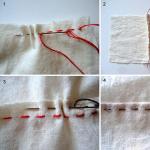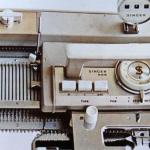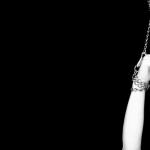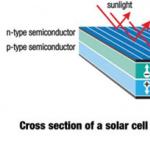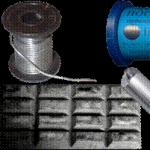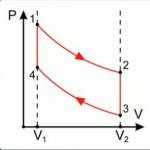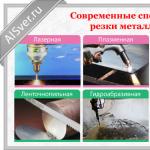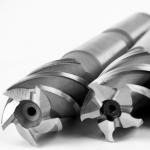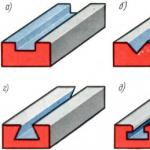Anyone who has dealt with photographic equipment, even in the form of a smartphone camera, knows that the quality of photographs is highly dependent on lighting. In low light, photos are not obtained or are of poor quality. At the same time, the brighter the object is lit, the more scope for choosing settings. Lighting can be natural (such as the sun) or artificial. Artificial lighting, in turn, can be constant or pulsed. Pulsed lighting is a variety of devices that are united by the general concept of "flash". It is about them that our article will be.
First, let's talk about the advantages and features of flashlights.
Energy efficiency. The flash, as you can understand, works for a very short period of time. To be precise, this time is even less than the shutter speed of a conventional camera. Therefore, the energy of the power source will not be wasted on creating a stream of light when it is not needed.
Unity of color temperature. All flashes have the same color temperature. That is, if you need to use several flashes at the same time, you can use different ones from different manufacturers.
Wide creative possibilities. Flashes have high brightness, so you can use reflected light, or light that has passed through a diffuser. The brightness of the flashes can be stronger than that of direct sunlight: even in bright sunlight, you can create the black and white pattern that you need.
Convenience. Modern flashlights are reliable, have simple controls and low cost. For example, a pair of on-camera flashes is lighter than a set of lenses for an interchangeable lens camera, but gives you just as much creativity.
As mentioned, all flashes are quite clearly divided into on-camera and studio ones. Let's talk about them separately.
On-camera flashes
On-camera flashes, as their name implies, are mounted on a camera equipped with a so-called “hot shoe”. These mounts, despite their external similarity, have a different arrangement of electrical contacts, so on-camera flashes in most cases are designed for cameras from a certain manufacturer.

Taking a closer look at the mount on any flash, we will see that there are a lot of contacts, which makes it clear: they serve to transfer data. This is due to the automatic modes of the camera, as described below.
Being portable devices, on-camera flashes have a lightweight design, that is, a plastic body and optics.
When choosing a camera flash, you should pay attention to the following:
Focal length
On-camera flashes, using their own built-in optics, can “adjust” to the equivalent focal length of the lens. Actually, in the flash settings, you can specify this focal length in order to make the most of its power.

Guide number
This is a conditional value, measured in meters, characterizing the flash power.
The main characteristics of camera flashes always indicate the guide number at the maximum zoom of the flash, as it is simply larger. This is worth paying attention to. Therefore, modern flashes with a guide number of 60 at a focal length of 200 mm do not differ in power from flashes of the previous generation with a guide number of 58 at 120 mm.
Modes
The input for the sync cable is a 3.5 mm jack, less often a 6.3 mm jack (similar to the headphone audio jack). When its contacts are closed, a flash is fired. To do this, cameras may have a so-called PC-connector, which is connected to the flash with a sync cable to synchronize the flash with the triggering of the camera connector.
For simple studio shooting tasks, so-called flash lamps can be used. They are a flash in a housing designed for E27 cartridge, they are low price and easy to use. The disadvantage of such flashes is their low power.

conclusions
Considering the main characteristics of modern flares, you come to the conclusion that they do not change so much with time. For example, ten years ago, the functionality of on-camera and studio flashes was very similar to what it is now. However, with the advent of Chinese manufacturers, something very important has changed - the price. It decreased by three to four times, both for on-camera and studio flashes (relative to the cost of cameras and lenses). As a result, shooting with artificial lighting has become affordable, many people buy studio lighting for personal use. So, if you are thinking about how to realize the creative possibilities of your camera, we advise you to take a closer look at various flash units.
If you're serious about photography, you've thought about buying an external flash for your camera. An external flash gives the photographer great opportunities both for reportage shooting and for staged photo shoots. But how do you choose the flash that's right for you? In this article, we'll walk you through the most important flash specifications to look out for when buying, and help you choose the right flash for you.
When buying any thing, you should first of all read about its characteristics. And the choice of flash is no exception. Therefore, first of all, we will find out which characteristics are especially important when choosing a flash. Understanding these things will help you further understand the range and choose the right flash for you.

Guide number- the main characteristic of the flash, talking about its maximum power.
The guide number indicates the maximum distance in meters from which a correctly exposed frame can be obtained at ISO 100 and aperture 1.
Simply put, the larger the guide number, the greater the maximum flash output.
TTL- This is a technology by which the camera measures the exposure and sets the flash output to obtain a correctly exposed frame. Sometimes, the flash will pre-flash before the frame to assess the degree of illumination.
Each camera manufacturer uses its own developments to improve conventional TTL, for example, Nikon uses i-TTL, and Canon uses E-TTL.
Auto zoom. When shooting with a zoom lens, the photographer often changes the focal length. In order to match the change in focal length, the flashes are equipped with an automatic zoom. It is a diverging lens located immediately in front of the flash lamp. As it moves, it changes the dispersion of light.
Thus, using zoom, the flash can focus the flash in the center of the frame, or give more fill light. This means that the flash will adjust itself to the frame you are shooting, whether it is a group photo or a close-up portrait taken at a long focal length.
Minimum recharge time- indicates the flash recycle time when using new AA batteries. This characteristic is especially important if you plan to shoot reports, where the speed of flash recycling depends on whether you have time to "catch" the frame or not.
Exposure control- This option describes the available shooting modes for the flash, such as slow sync, red-eye reduction, rear-curtain sync, auto FP high-speed sync, flash output lock, and others.
Swivel head allows you to change the direction of the light flux. Simply put, this characteristic tells you whether you can point the flash head at the ceiling or to the side.
These are the main characteristics of flashes. Also, depending on the model, there are such features as trial firing, monitor pre-flashes, AF-assist illuminator, modeling light and other "chips".
Now that we know what the characteristics of a flash mean, let's try to choose a model that is right for you.
First of all, you need to decide for what kind of shooting you need a flash and, based on this, choose a model that suits you.
In fact, all outbreaks can be divided into three classes:

A separate type of flashes is macroflares.

If you're into macro photography like flowers, plants or insects, this is the kind of flash you need. The essence of a macro flash is that it is attached to the lens itself, thereby its light will go directly to the subject. When using a conventional flash, the light comes from above the lens. This means that if you shoot a small object, the light may simply not fall on it or you will get ugly shadows. The macro flash will highlight the shadows on your subject and you can get an interesting photo.
As you can see, the most important thing is to decide what you want to shoot. Whether you're just looking for a flash for shooting friends at a party or for some serious reportage, there's a model for every purpose.
The question of how to choose a flash is puzzled by almost every photography enthusiast who has decided to delve deeper into this complex and fascinating art. In this article, we will try to help you choose an inexpensive and versatile external flash for your camera.
The question of how to choose a flash is puzzled by almost every photography enthusiast who has decided to delve deeper into this complex and fascinating art. This is quite natural, given that the capabilities of flashes built into modern cameras are clearly not enough to implement all creative ideas, and many semi- and professional-class cameras generally provide for the use of on-camera flash only. At the same time, despite the abundance of articles on this topic on the Internet, it is very rare to find information regarding an adequate choice of a flash for an amateur, both in terms of quality and price. Well, let's try to fill this gap.
What you need to know when choosing an external flash?
In order to determine what kind of external flash you need, you should carefully study its parameters and correlate it with the conditions in which you most often shoot. So, when choosing a flash, you should pay attention to the following characteristics:
1.Guide number. It is indicated in meters and implies the distance at which you can get a frame with a normal level of illumination with a sensitivity of 100ISO and an aperture of 1.0. In fact, this means that the larger the guide number specified by the manufacturer, the more powerful the flash.
2. The presence of automatic zoom. The flash zoom is a special lens mounted between the lamp and diffuser and capable of moving equivalent to the focal length of the lens. It allows you to direct the beam of light both pointwise and diffused, which gives you more variation in your work.
3. Availability of TTL system. This system allows you to synchronize exposure data with those set by the camera, that is, the flash “exchanges” information about all shooting settings and “selects” the pulse power accordingly.
4. The time it takes to recharge the flash capacitor. The smaller it is, the faster the flash will be “ready” for a new shot.
In addition, conditionally, all external flash units can be divided into two categories - those with a swivel head and monoblock, that is, those in which the flash illuminator is installed in one position and is directed directly at the subject. I must say that almost all manufacturers of photographic equipment, including Canon, Nikon and Sony, produce flash units of both types. At the same time, monoblock on-camera flashes are positioned as an amateur solution, and versions with a rotary head are more expensive.

Selecting a Flash Manufacturer
It would seem that there should be no problem with the choice. However, in practice, an amateur, wondering how to choose a flash, is faced with a rather serious factor - the price of branded accessories. In fact, a person who takes the first steps in the world of photography and bought, for example, an amateur-grade DSLR, has to be content either with a cheap flash from the camera manufacturer, which differs from the built-in only slightly more power, or part with an amount that is slightly less than the price of the camera itself. , for the purchase of a more serious and functional product. For comparison, the cheapest monoblock external flash on Canon costs about 5 thousand rubles, and the cheapest model with a rotary head costs about 10 thousand. At the same time, we are talking about the most budget options.
Of course, such a pricing policy of the "grands" leaves "freedom of maneuver" for manufacturers of accessories, which include both large companies like Sigma or Metz (their products, by the way, are not cheaper and often more expensive than camera manufacturers), and a huge number firms from the Middle Kingdom. Of the products of the latter, YongNuo, Doerr and others are widely represented on the Russian market. Their products are very affordable. In particular, for the cheapest flash YongNuo YN-460II they ask for an average of just over 4 thousand rubles, despite the fact that this model is equipped with a swivel head, built-in reflector and diffuser, and it is available in several versions that allow it to be installed on most cameras, including budget ones. DSLRs from Sony, which have their own branded hot shoe connector.
Based on the foregoing, let's try to figure out which flash to choose for an amateur - directly from the manufacturer, from a major flash manufacturer, or from a third-party Chinese company.
To do this, we will need to clearly understand the advantages and disadvantages of these solutions, which are easiest to determine from our table:
|
Flash units from the camera manufacturer or a third-party specialized company |
Third-party flash units from China |
||
|
Advantages |
Flaws |
Advantages |
Flaws |
|
1. Stable quality; 2. Compliance with the declared and actual performance; 3. Full integration with the camera through the system TTL ; 4. Dust and moisture protection in expensive models. |
1. High price. |
1. Low price; 2. More functions; 3. Rich set of delivery. |
1. Lack of camera integration ( TTL - measurement is not available for most models), 2. Low level of workmanship, 3. Often occurring errors when synchronizing with the camera. |
As you can see, there are quite a few shortcomings in Chinese flashes, but the build quality of the case and errors, which, by the way, do not occur so often, are fully justified by the extremely affordable cost of the product. When deciding how to choose a flash for a person who does not plan to use it for professional purposes, it makes sense to pay attention only to the aspect of the lack of synchronization of Chinese flashes with the camera. In fact, this means that when photographing with such a flash, you yourself, often by experience, will have to set its power and put up with the not always correct determination of the white balance. In addition, if the sensitivity is limited when shooting indoors, you will need to set the shooting parameters manually, which also presents certain difficulties for a beginner. However, we will immediately give a hint - for most shootings with flash without TTL indoors at maximum power, it makes sense to set a shutter speed of 1.125 seconds with an aperture of 5.6 and a sensitivity of ISO 100. This is enough to get a normally exposed frame at a distance of more than a meter. In this case, the white balance can also be set manually using the preset for working with the flash.
Selection results
So, in this article we tried to analyze aspects of how to choose a flash for an amateur. It is clear that a professional will most likely prefer a “top-end” solution from a camera manufacturer or companies like Metz (although this is far from always an indisputable fact and there are excellent photographers who shoot with budget equipment). A novice photographer may well save money and purchase an inexpensive option. By the way, the absence of TTL in this case even looks preferable, since a beginner in photography will have to familiarize himself with the manual settings of the camera and understand the basics of the exposure of the image, that is, it will come into contact with the initial basics of real photography. Well, if this fact scares you, then you can purchase a more expensive solution - here the choice remains solely with the amateur photographer.
Greetings, dear readers! With you again, Timur Mustaev. Have you thought about purchasing an external flash? I hasten to congratulate you on this event, because you have grown up as an amateur photographer and, most likely, have stepped over the initial level of acquaintance with your SLR camera.
Now you have an important choice to be taken very seriously.
In this article, you will learn how to choose a flash for Canon, as well as which models of this line are considered the most popular and what are their differences.
general characteristics
To begin with, let's figure out what fundamental characteristics external lighting devices should have.
- First of all, this guide number, which shows at what maximum distance the flash can illuminate the subject.
The guide number value of many external flash units exceeds 30 meters. For you to understand, the built-in indicator is about 12 m.
Therefore, the higher the value of the guide number indicated in the accessory passport, the better.
- The second equally important feature is metering system to let the camera set the required flash output.
There are three ways to carry out exposure metering: in manual, automatic and automatic TTL mode.
Many models are equipped with three modes at once, which makes it possible to shoot under any conditions.

- The third characteristic is control and direction of the light flux due to head rotation.
- Fourth - the presence of a zoom reflector, which increases the distance to the subject when using a zoom camera.
- The fifth feature is wide angle LED diffuser.
- Sixth - the ability to act as a master / slave flash.
- Seventh - device power supply(accumulator + batteries).
Popular Flash Models for Canon
We got acquainted with the distinctive characteristics, now we will consider the most popular models suitable for the Canon 600d, 650d, 60d, 6d, 550d, 1100d, 500d, 70d, 1000d and everything else.
Let's go in ascending order:
- Speedlite 270EX II, is considered a budget option designed for beginners.
Specifications: guide number - 27; manual exposure metering from the camera menu; the presence of a zoom reflector; fast recharge; rotating flash head.

- Speedlite 430EX, a semi-professional flash that came off store shelves. The only way to purchase is by hand.
Characteristics: guide number - 43; backlit display; automatic exposure metering, adjusted to the capabilities of the camera; swivel head; the presence of manual and automatic selection of the angle of illumination.
This model is suitable for photographing family holidays and meetings with friends. It will allow you to take decent photos at a small financial cost.

- Speedlite 430EX II- an improved model from 430EX.
The changes affected the reload speed, in connection with which it became possible to shoot in series. A newer model in this series is the 430EX III-RT. Today this model is very popular and sold.

- Speedlite 580EX II– a good flash of the next generation.
The guide number is 58. It is quiet and has a fast reload speed. In addition, the device is protected from moisture and dust, which allows you to work in completely unpredictable conditions.

- Speedlite 600EX RT And 600EXII-RT- Here we are talking about professional outbreaks.
Well, there is nothing to talk about here, it contains all the best that is. Protected from overheating. stable. Workhorse. Will never let you down!
In addition to the usual flashes, there are specialized ones for macro photography, for example, ring Macro Ring Lite MR-14EX II.
The design of this type provides an even distribution of light around small objects, ideal for photographing wildlife, flowers, insects.
Lamp control allows you to customize the light for a specific occasion.
The MR-14EX II can be used in conjunction with other light sources.

Generalization
As you can see, the possibilities of flashes are diverse, which, in turn, gives great potential for work, and the presence of attachments and other accessories makes life easier, allowing you to realize all your creative ideas.
From the flow of all the information provided, you, as an inexperienced user, need to understand what features of flash units you cannot do without. Based on this, make a choice in favor of a particular device.
If finances do not favor the purchase of original flash units, you can turn your attention to Chinese counterparts. However, do not expect a miracle in the smooth operation, because they hardly read information from the camera, which slows down the shooting or even makes it impossible.
If you are just starting to develop as a photographer, then in order to get to know your SLR camera better, be sure to study the video course - “” or “ My first MIRROR". You will learn a lot about the capabilities of your camera through examples. Very easy to understand. For beginner photographers who ask a lot of questions and are really interested in this topic, I recommend this course. Develop in the right direction!
Digital SLR for beginners 2.0- for owners of a NIKON SLR camera.

My first MIRROR- for owners of a CANON SLR camera.

I hope this information was useful and instructive for you. Subscribe to blog updates, share with friends.
All the best to you, Timur Mustaev.
Artem Kashkanov, 2017
Many amateur photographers, having had enough of all the "charms" of the built-in flash, sooner or later are puzzled by the choice of an external flash. In this article, I will give brief recommendations that will probably help you buy such an external flash, so that later you will not be excruciatingly painful for wasted money.
First of all, you need to be aware of what an external flash is really needed for. Probably, having read articles on the Internet, you already know that an external flash has a large guide number, that is, it is more powerful than the built-in one and has a greater range. This is an absolute plus, but not the main one. The main advantage of an external flash is that it allows you to shoot not in direct, but in reflected light, which provides a smoother filling of the room with light and makes the cut-off pattern more artistic than direct lighting (head-on flash).
External flashes come in different classes and they cost differently. It even happens that the flash costs more than the camera. What is the reason for such a difference in price? Is it just the leading number? No, there are other important parameters, which will be discussed below. What should I pay attention to when choosing a flash?
flash head
The flash head must turn. Moreover, not only in the vertical, but also in the horizontal direction. This gives more freedom in choosing a reflective surface - after all, flash light can be reflected not only from the ceiling, but also from the wall. Also, the ability to turn the flash head in a horizontal plane is indispensable if we need to shoot vertical shots, reflecting light from the ceiling.
Guide number
The guide number is an important but not critical parameter. Modern professional-grade flashes have a guide number of 50-60 (roughly equivalent to an effective range of 25-30 meters or more). In fact, this is only required when shooting in very large rooms with a telephoto lens. For most scenes, a flash with a guide number of 25-30 is enough, incl. for wedding photography. The lack of a guide number is easily compensated by increasing the ISO, which is not a problem for most modern cameras.
Master and slave modes
External flashes can work separately from the camera. You can create lighting schemes that involve multiple flashes. In this case, one flash is the master, the rest are slaves. As a rule, only flashes of the upper price range have the leading function. They have a built-in radio transmitter that gives the rest of the flashes a command to fire. If your plans include shooting using several flashes at once, one of them should be able to be the “leader”.
Another way to use multiple flashes at once is light sync. To work with it, it is necessary that additional light sources have a "light trap" - a device that reacts to an external light pulse and causes the light source to work synchronously with it. This method of synchronization is widely used in studio shooting, monoblocks are used as lighting - powerful pulsed light sources powered by an electrical outlet. What if the flash does not have a "master" function? Does this mean that it is not suitable for professional shooting? No, it doesn't. When installed on the camera, it behaves exactly like a more expensive model. One to one! Moreover, it can be removed from the camera, mounted on a separate tripod and set on fire using a radio synchronizer - a paired device consisting of a transmitter and receiver. The transmitter is placed on the hot shoe of the camera, the receiver is connected to the flash. Some flashes have a built-in light trap, for them even the built-in flash can act as a “master”!
Focal length range
It may sound strange, but the flash also has this characteristic! The flash can change the angle of light dispersion depending on the focal length of the lens. This allows you to use a narrower and more directional beam of light when shooting with a telephoto lens and not waste energy on illuminating the entire room. Most flashes support zooms in the 24-105mm range. Sometimes there is a wide-angle diffuser that provides uniform illumination of the frame when shooting at a focal length of 16-17 mm.
Retractable reflector (white card)
More expensive flashes have a retractable reflector in addition to the wide-angle diffuser. It is used when shooting with flash at the ceiling. At the same time, part of the light flux is reflected from the reflector and highlights the shadows, under the eyebrows and chin. Also, the presence of a white card adds a glare in the eyes of the model, making them more expressive and "alive". The absence of a retractable reflector is not a critical drawback. It can be replaced with a homemade one, or just a business card that is attached to the head of the flash with a rubber band.
Fast sync
Additional useful features include fast synchronization. Typically, the minimum flash exposure is limited to 1/200 ... 1/250 seconds. This is due to the specifics of the operation of the SLR camera shutter. At faster shutter speeds, the shutter curtain does not open fully, but looks like a narrow "slit".
This "slit" runs from top to bottom and consistently illuminates the sensor. This limits the flash's usefulness when shooting outdoors on a sunny day to soften shadows. To stretch the shutter speed to 1/250 second, you can stop the aperture, but this will increase the depth of field - this is not always beneficial. However, if the flash is able to artificially "stretch" the duration of the pulse for the time when the "slit" runs along the matrix, it becomes possible to shoot at shorter shutter speeds. This is called fast sync.
Synchronization on the first and second curtain
With most external flashes, you can set the moment when it will fire - when the shutter opens or when it closes. When shooting static scenes, there is no difference, but when shooting dynamics, the difference is cardinal - on the first curtain, the trail from the movement of the object is directed forward, on the second curtain - backwards. This can further emphasize the dynamics.
Original or non-original?
It is traditionally believed that it is better to buy original flashes. This guarantees 100% compatibility, which will save you a lot of nerves and possibly money. Imagine the situation - you are filming a wedding, some crucial moment, for example, the first kiss. That's right, it's that moment, you press the button and ... BOOM! The flash "beats" at full power and hopelessly illuminates the picture. If you use the original flash, the likelihood of such an unpleasant moment tends to zero. Non-original can fail. Somehow let me down. From this we can conclude that if you are engaged in the implementation of responsible orders, I would definitely recommend not to spare money and buy an original flash. Let not as powerful as the Chinese one for the same money, but "native". Pay off!
For home photography, and leisurely staged photo shoots with a large number of takes, a non-original flash will fit quite well, fortunately, now their quality has grown significantly compared to what it was at the dawn of my reportage photography.
Accumulators or batteries?
Flashes are usually powered by 4 AA batteries (“finger-type” batteries). I would recommend buying batteries right away. As practice shows, a set of batteries with a capacity of 2700 mAh is enough for about one and a half thousand operations, sometimes more - depending on the shooting conditions. Batteries drain noticeably faster. If you do not plan to regularly photograph the reportage, it will be enough for you to buy one set of batteries and, in which case, buy batteries for safety. Nobody forbids buying several sets of batteries, but almost certainly the second set will be used very rarely. Most of the time they will just lie there and self-discharge.
The Photobook has a chapter "". It describes in more detail the principle of operation and modes of operation of an external flash, as well as some examples of using an external flash in practice.



